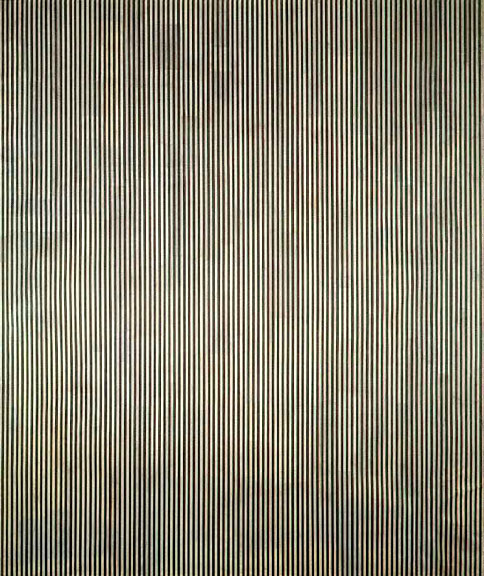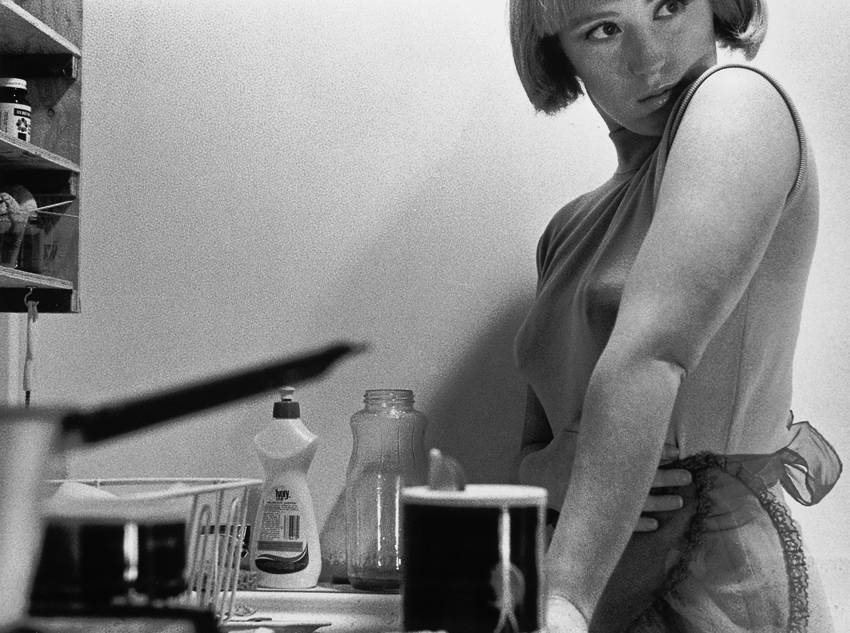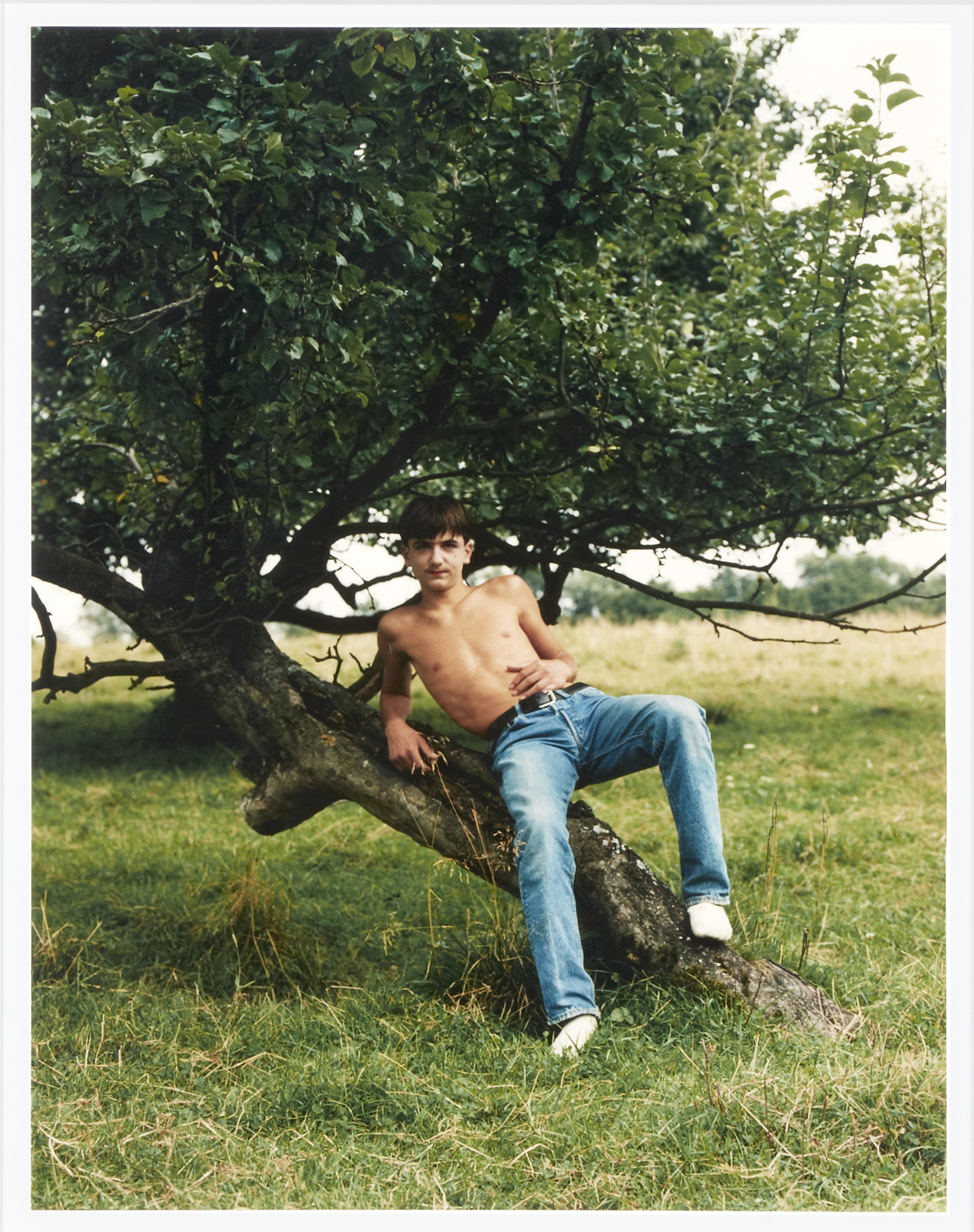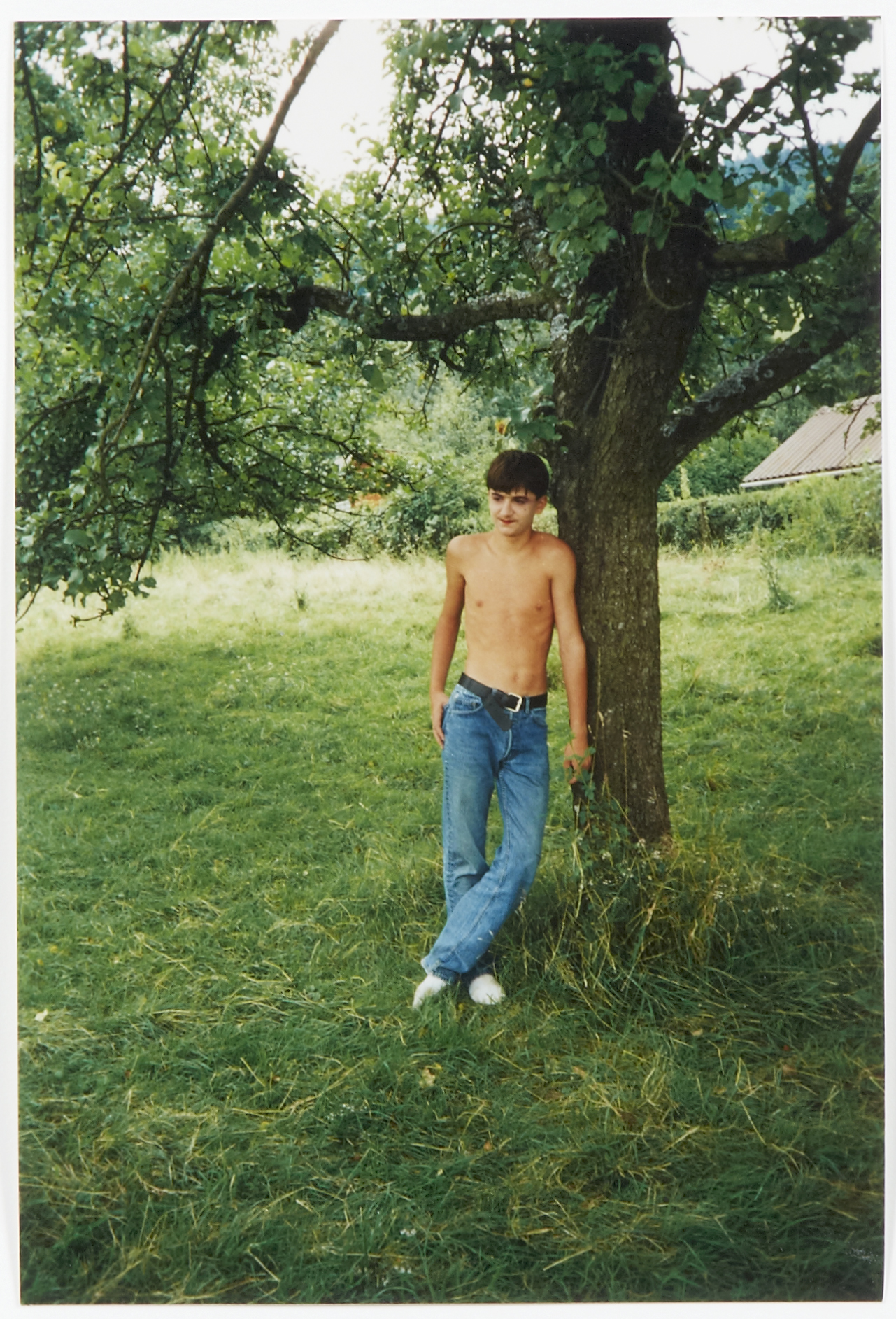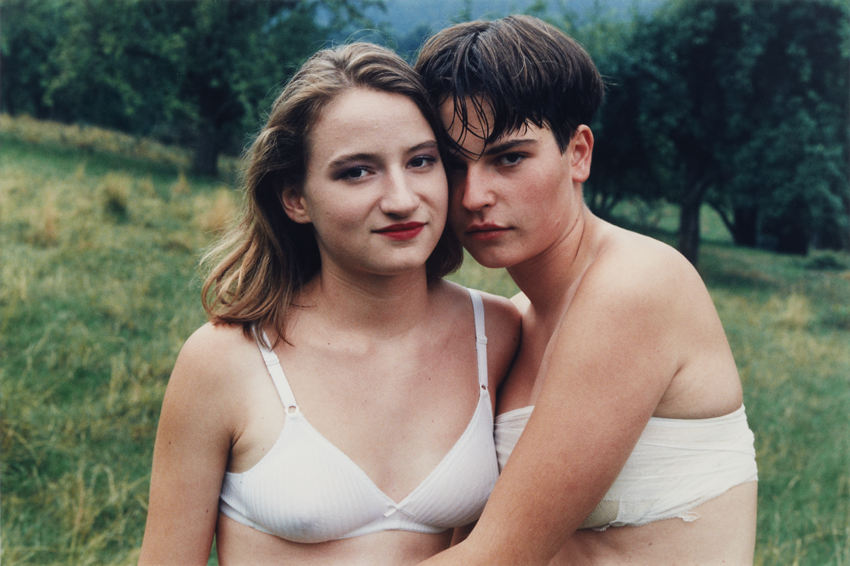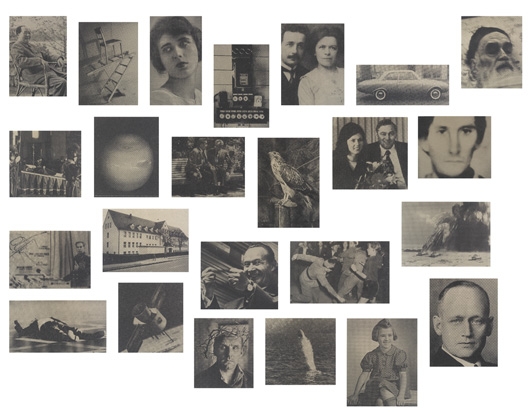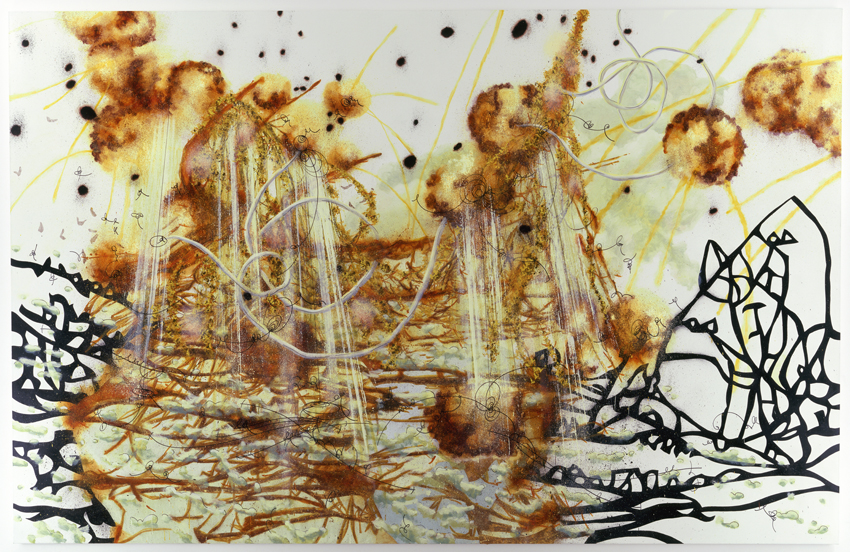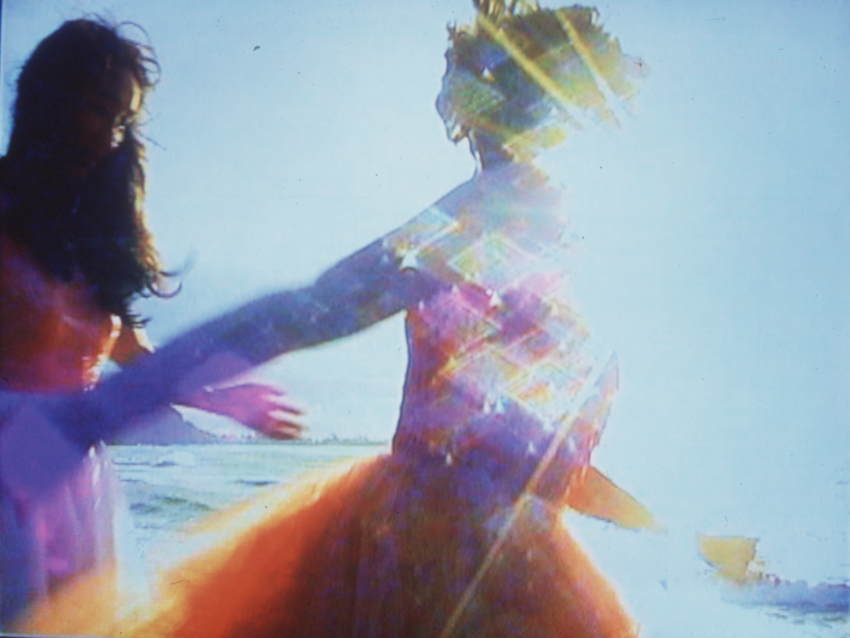Collier Schorr (Born 1963 in New York) has been making candid portraits since the late 1980s. Best known for photographs of adolescent men and women, she has recorded teenagers across Germany and the United States, in addition to making photographic series of wrestlers, young soldiers, and solitary figures. Schorr’s work addresses the desires and conflicts that attend an adolescent’s dawning sexuality, especially the social construction of gender. Her often androgynous subjects display the longing, intimacy, and alienation that accompany the formation of identity, and her titles frequently point to these issues. Schorr’s refusal of the binary logic of girl/boy extends to other social and historical oppositions, such as German nationalism and Jewish identity.
South of No North is an intimate portrait of two adolescent girls embracing in a field. One has shoulder-length hair and wears red lipstick and a thin white bra, and the other has close-cropped hair, more pronounced features, and appears to be wearing a binding bra. The intimacy of the young same-sex couple, the masculinity of the figure on the right, and the bucolic setting combine to produce a portrait of budding sexuality that interrogates conventional representations of gender and love.
The ICA/Boston holds a number of portraits by Collier Schorr in its collection, all of which explore the rich terrain of gender and sexuality. Schorr is an important contemporary photographer, whose work adds to the ICA collection’s strength in work by women.
